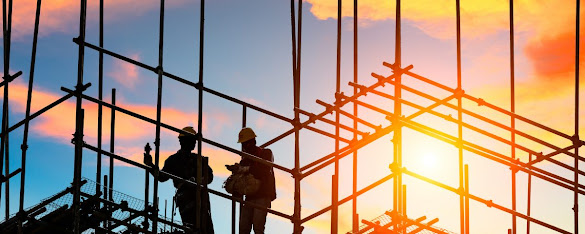Learning About Steel Scaffolding for Construction

Also known as scaffold or staging, scaffolding is a term that refers to part-time structures used to support crews and various construction materials during the erection or repair or various buildings and other structures. While it has been around for thousands of years dating back to ancient times, it’s only within the last century that the primary materials for scaffolding became metals like steel and aluminum.
At Wasatch Steel, we can help you with a variety of steel products and services if you’re in need of scaffolding for an upcoming project. Let’s go over everything you need to know about scaffolding including what goes into it, the components required for it to operate properly, and some of the common applications of scaffolding in the modern world.
Defining Basic Scaffolding Elements
Metal scaffolding allows workers to safely, conveniently access high and difficult locations during various construction projects. It does so through the use of three basic structural elements:
·Standards: Vertical steel or aluminum tubes that are placed throughout the structure to support it and hold it up. These tubes all are balanced by a square base plate, which spreads the weight around evenly so there’s no risk of collapse.
·Ledgers: Horizontal tubes that connect various standards and further supplement balance.
·Transoms: Different horizontal tubes placed perpendicularly to the ledgers. These are meant to add strength and support for standing platforms, which may be placed on several levels of scaffolding simultaneously.
Which actual metal pieces are used to create the above elements, along with platforms and floors? There are a few basics to know:
·Tubes: When made from steel, tubes for scaffolding are generally created using hot-rolled steel, though certain special applications will require a glass fiber in a nylon matrix.
·Couplers: Couplers hold tubes together in scaffolding through one of a few different formats.
·Boards: Also called decking, boards made from either basic wood or possibly steel or aluminum will be used to create scaffolding floors. Even when wood is used, metal is required for use as protective plates on the ends of the wood pieces.
As we noted above, steel and aluminum are the two most common metal types used for scaffolding. The primary benefit of using steel over aluminum is the weight and durability – steel is about three times as heavy as aluminum, and many feel it provides a stronger and more durable support.

Scaffolding Formats
Scaffolding is of great use in several areas of construction, including the following formats:
·Suspended scaffolding: Scaffolding that hangs down from the roof of a building, often in circumstances where creating a base is impossible or access from the ground is limited.
·Supported scaffolding: The more common type, built from the ground up. This is the safest and most convenient form of scaffolding, and recommended where possible.
·Rolling scaffolding: Almost the same as supported scaffolding, but with castor wheels on the base instead of a stable structure. This allows the scaffolding to be moved to different areas of the structure if needed, but also for locking the wheels in place as appropriate so there’s no danger of movement.
For more on scaffolding, or to learn about any of our steel products, speak to the staff at Wasatch Steel today.



Comments